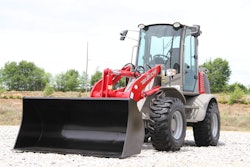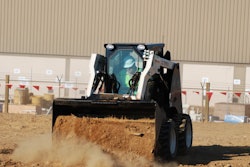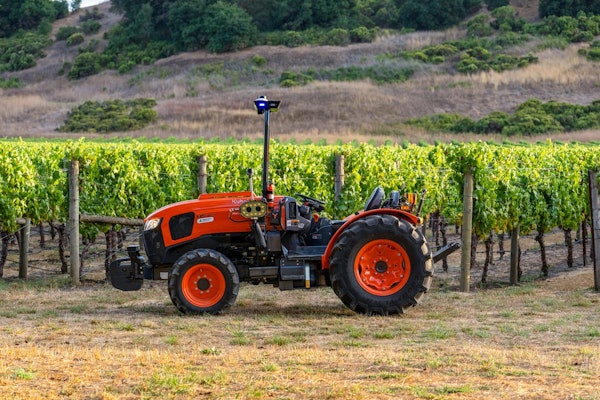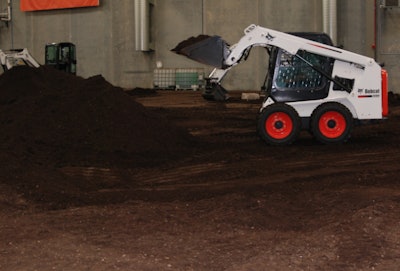
Skid steers can be a versatile piece of equipment, but it won’t do you much good if it spends more time with your mechanic than on the jobsite.
To keep your machines out of the shop, it’s important to follow a proactive maintenance schedule.
“When looking at maintaining a skid steer loader, the first thing you should do is go through a daily maintenance check,” says Mike Fitzgerald, product specialist, Bobcat.
Here are the four spots you need to look at before operating your skid steer.
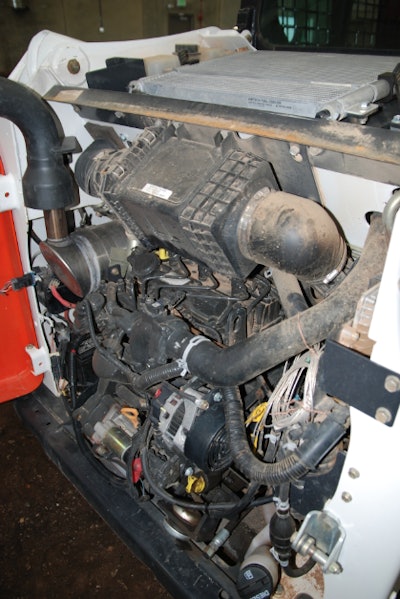
The majority of the vital components can be inspected at the back of the machine. Start by opening the tailgate and checking the oil levels.
“Make sure to have those fluids at the full and proper levels,” Fitzgerald says.
Check the hydraulic oil, which is on the top right, to make sure the levels are correct. The gauge will either be on the top or side, depending on the model.
The oil type is also important because it needs to be compatible with the treatment system on the machine – whether it be a catalyst or filter on the exhaust system.
“One of the things that’s important on newer machines and all new equipment that’s made to meet EP requirements for Tier 4 is the engine oil you use,” Fitzgerald says. “You want to make sure you use a CGA 4 or above-level oil that’s approved for these engines.”
Next, look at the cooling components to make sure they are clean and getting the proper airflow through. The cooling recovery bottle, which is to the left of the air filter, should be full.
RELATED: 3 Ways to Extend Life of Skid Steer
2. Moving parts
For smooth operation, you should also grease the pivot points regularly.
“All of the points that move on the machine will have grease circs on them,” Fitzgerald says. They are located on the lift arm and where the attachment connects to the machine.
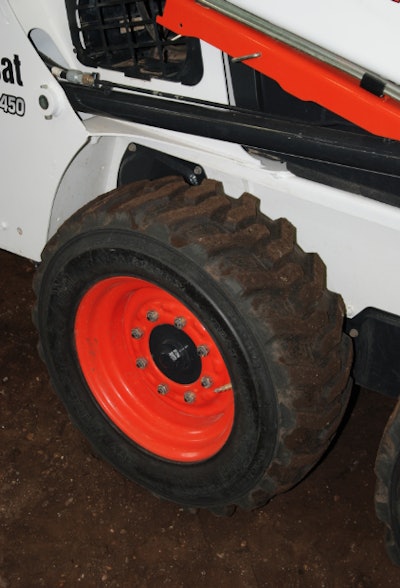
To keep your skid steer rolling, you’ll need to check the tire pressure, especially during the winter months.
“Tire pressures do go down because of colder temperatures,” Fitzgerald says. “Make sure to have it at the proper inflated pressure that would be listed in the operations manual.”
(For compact track loader, make sure the tracks are set to the proper tensions, which vary depending on the make and model.)
4. Attachments
For ground-engaging attachments, keep an eye on the bucket cutting edge and teeth.
“Make sure the teeth are in good shape,” Fitzgerald says. “Watch to see if they are wearing down. If they are starting to wear down, you’ll want to replace them before you do any damage to the host tooth holder or the bucket itself.”
Also look at the back of the bucket. “Make sure hoses and tube lines are tight, not leaking and don’t have any debris near them that might cause you a problem later on during your operational task during the day,” he says.
NOTE: This information is a general overview of what you should look at each time before operating a skid steer. You should also follow the maintenance schedule recommended in the operators’ manual.
[youtube vgzaXWOZQ-Q nolink]

